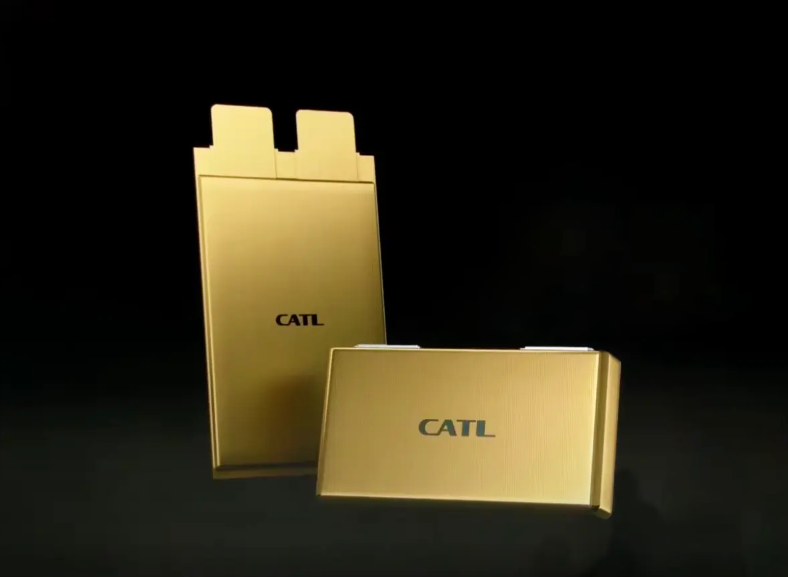Image source: CATL
The battery industry is on the brink of a major transformation with the introduction of condensed batteries—a new high-energy-density technology that could redefine applications across electric vehicles (EVs), aviation, and beyond. Leading this charge is Contemporary Amperex Technology Co., Limited (CATL), the world’s largest battery manufacturer, which unveiled its 500 Wh/kg condensed battery in 2023.
This breakthrough surpasses traditional lithium-ion energy densities and has already been successfully tested in a 4-ton electric aircraft, an incredible testament to its potential to revolutionize both terrestrial and aerial mobility.
In this article, we break down everything known about condensed batteries, including their development, technical specifics, applications, and market implications—especially for industry giants like Tesla.
What is a Condensed Battery?
CATL first introduced its condensed battery technology in April 2023, claiming it would achieve energy densities up to 500 Wh/kg—nearly twice the density of Tesla’s 4680 cells (~250 Wh/kg). By early 2024, the company had successfully powered a 4-ton electric aircraft with this technology, proving its viability in demanding, high-power applications.
Unlike conventional lithium-ion batteries, which rely on liquid electrolytes, condensed batteries utilize a biomimetic condensed-state electrolyte that enhances ion transport efficiency and structural stability. This electrolyte forms a micron-scale self-adaptive network, optimizing charge-discharge performance and extending battery lifespan.
The core advancements in condensed battery technology include:
- Energy Density: 500 Wh/kg (vs. 250–300 Wh/kg for current lithium-ion batteries)
- High Conductivity: Enabled by biomimetic condensed electrolytes
- Structural Stability: Advanced microstructure design improves lithium-ion transport and cycling performance
- Versatile Application: Usable in electric vehicles, aviation, and high-end energy storage
This higher energy-to-weight ratio makes condensed batteries particularly promising for long-range EVs, next-gen electric aircraft, and heavy-duty transport where weight savings are critical.
Applications: From Cars to Aircraft
1. Electric Vehicles (EVs)
CATL, which already supplies Tesla, Nio, and Volkswagen, sees condensed batteries as the next step in high-performance, long-range EVs. Compared to lithium-ion packs:
- Condensed batteries could enable EV ranges exceeding 1,000 km (620 miles) on a single charge.
- Lighter battery packs could reduce vehicle weight, enhancing efficiency and performance.
- The faster charge-discharge rates may shorten charging times while maintaining safety.
Tesla, which currently relies on CATL for lithium-iron phosphate (LFP) batteries, could integrate condensed cells in future long-range or high-performance models.
2. Aviation and Aerospace
Perhaps the most groundbreaking development is CATL’s successful test flight of a 4-ton electric aircraft using condensed batteries in 2024. This marks the first time an all-electric aircraft of this scale has flown, opening the door for next-gen eVTOLs (electric vertical takeoff and landing aircraft) and regional electric aviation.
Image source: CATL
Future applications in commercial aviation could see electric planes with ranges exceeding 2,000 km (1,240 miles)—potentially replacing short-haul flights with zero-emission alternatives.
3. Industrial and Grid-Scale Storage
Beyond transportation, condensed batteries could reshape renewable energy storage by offering higher capacity, longer lifespan, and improved stability for grid-scale solutions.
Market Trends
CATL’s Industry Dominance
As the world’s largest EV battery maker, CATL has secured its leadership through continuous innovation and strategic partnerships. With clients ranging from Tesla to BMW, Nio, and Ford, it controls over 34% of the global EV battery market (as of 2023).
The launch of condensed batteries solidifies CATL’s dominance, positioning it as the first to mass-produce next-generation energy storage solutions.
Impact on Tesla
Tesla, which sources LFP and nickel-based batteries from CATL, could see its battery supply strategy evolve with condensed batteries.
- Potential benefits for Tesla:
- Integration of 500 Wh/kg cells into long-range models
- Lightweight battery architecture for future performance vehicles
- Faster charging times & extended range, reducing dependency on lithium-ion tech
However, Tesla also has its own in-house 4680 battery program, which could delay its adoption of condensed batteries—depending on costs and production scalability.
Future Market Adoption
Despite its game-changing potential, mass adoption of condensed batteries faces challenges:
- Manufacturing Scalability: Current production costs are higher than lithium-ion, requiring efficiency improvements.
- Raw Material Sourcing: Condensed electrolytes and cathode materials demand supply chain expansion.
- Regulatory Approvals: Especially for aviation and aerospace applications, where safety standards are stringent.
CATL plans to bring automotive-grade condensed batteries to market in the near future, with aviation-grade versions to follow. As economies of scale improve, cost reductions will accelerate adoption across industries.
Whether in EVs, electric planes, or grid-scale applications, this ultra-high-density battery technology is set to redefine the future of clean energy.


